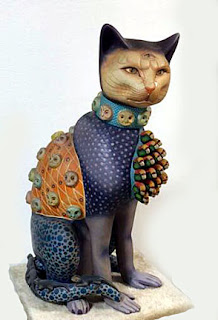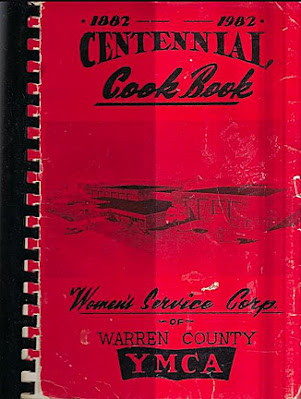 QUESTION: A few years ago, I went on a trip to Italy. While traveling along the Amalfi Coast south of Rome on my way to visit the ruins of Pompeii, I discovered shop after shop filled with beautiful cameos. I bought several and would love to buy more. What can you tell me about the origins of cameos, and how can I tell if cameos are genuine?
QUESTION: A few years ago, I went on a trip to Italy. While traveling along the Amalfi Coast south of Rome on my way to visit the ruins of Pompeii, I discovered shop after shop filled with beautiful cameos. I bought several and would love to buy more. What can you tell me about the origins of cameos, and how can I tell if cameos are genuine?
ANSWER: Cameos have been collectible since the Renaissance in the 15th century when wealthy women collected them as status symbols. Today, elderly Italian master carvers are retiring, causing an escalation in the prices for finely carved cameos. Plus, new laser-cut cameos from China have been flooding the market. It’s now a buyer-beware market where only an expert is able to discern a really good cameo.
 A cameo is a form of carved bas-relief, which features portraits, landscapes, and mythological figures cut into a variety of materials, but most often into gemstones and shells. Artisans, both ancient and modern, have crafted cameos from two layers of one piece of material, the top of which protrudes from the background, creating a multi-dimensional artwork. Throughout history, these detailed reliefs have adorned pieces of jewelry, such as brooches, necklaces, bracelets, and rings. But the earliest cameo carvers took their inspiration from prehistoric petroglyphs, which documented important religious and symbolic imagery onto rock faces.
A cameo is a form of carved bas-relief, which features portraits, landscapes, and mythological figures cut into a variety of materials, but most often into gemstones and shells. Artisans, both ancient and modern, have crafted cameos from two layers of one piece of material, the top of which protrudes from the background, creating a multi-dimensional artwork. Throughout history, these detailed reliefs have adorned pieces of jewelry, such as brooches, necklaces, bracelets, and rings. But the earliest cameo carvers took their inspiration from prehistoric petroglyphs, which documented important religious and symbolic imagery onto rock faces.
 Cameos first appeared as far back as 15,000 BCE. where ancient Egyptian civilizations carved figures into rocks to record important events. Cameo artistry traveled between the ancient Mediterranean cultures through trade routes connecting Egypt, Greece, and Rome, and often depicted mythological themes while paying tribute to gods and goddesses. As the Roman Empire grew, cameo carvers began to incorporate political portraits into their pieces. Wealthy people could afford to buy the expensive gemstone cameos, while less wealthy ones bought glass cameos.
Cameos first appeared as far back as 15,000 BCE. where ancient Egyptian civilizations carved figures into rocks to record important events. Cameo artistry traveled between the ancient Mediterranean cultures through trade routes connecting Egypt, Greece, and Rome, and often depicted mythological themes while paying tribute to gods and goddesses. As the Roman Empire grew, cameo carvers began to incorporate political portraits into their pieces. Wealthy people could afford to buy the expensive gemstone cameos, while less wealthy ones bought glass cameos.
 During the reign of Alexander the Great in the 3rd century B.C.E., Greek and Roman cameos incorporated religious figures and mythological images. Also during this time, specifically in the Hellenistic era, women wore cameos to display their willingness to engage in the act of lovemaking. By the 15th century, cameos produced in Italy began to differ from the ancient ones.
During the reign of Alexander the Great in the 3rd century B.C.E., Greek and Roman cameos incorporated religious figures and mythological images. Also during this time, specifically in the Hellenistic era, women wore cameos to display their willingness to engage in the act of lovemaking. By the 15th century, cameos produced in Italy began to differ from the ancient ones.
In the 18th century, wealthier women began wearing impressively carved gemstone cameos as a sign of wealth and prestige. Carvers soon realized they could use Plaster of Paris molds to recreate cameos from notable collections. Scottish gem engraver and modeler James Tassie began using molds of these famous cameos to recreate glass pastes that could pass as authentic, carved jewels.
 Carvers realized just how easily they could replicate expensive jewels. They discovered the use of Cornelian shells, which were soft, durable, and easy to carve. Queen Victoria popularized shelled cameos, featuring natural and humanistic scenes carved onto deep-sea shells. Meanwhile, as interest in collecting cameos grew, French military leader Napoleon He brought carvers from all over Europe into France to create cameo jewelry for both men and women. He even commissioned furniture to be designed with cameos carved out of precious gemstones like opal, sapphire, and garnet.
Carvers realized just how easily they could replicate expensive jewels. They discovered the use of Cornelian shells, which were soft, durable, and easy to carve. Queen Victoria popularized shelled cameos, featuring natural and humanistic scenes carved onto deep-sea shells. Meanwhile, as interest in collecting cameos grew, French military leader Napoleon He brought carvers from all over Europe into France to create cameo jewelry for both men and women. He even commissioned furniture to be designed with cameos carved out of precious gemstones like opal, sapphire, and garnet.
 A new type of cameo made from lava rock also appeared during this time. Colored lava extracted from an archaeological dig at Pompeii proved useful for highly detailed carvings. Women often purchased lava cameos as mementos from their travels on their Grand Tours, which established the objects as a symbol of status and wealth.
A new type of cameo made from lava rock also appeared during this time. Colored lava extracted from an archaeological dig at Pompeii proved useful for highly detailed carvings. Women often purchased lava cameos as mementos from their travels on their Grand Tours, which established the objects as a symbol of status and wealth.
 Over the centuries, artisans have created cameos by carving figures in bas relief from precious gemstones such as onyx or agate, one of the most commonly used. The most common motif of antique cameo jewelry depicted a profile of a face or mythical creature. Whether ancient or modern, cameos typically have two colored layers—figures carved in one layer raised on the background of the second layer. Today, workers in “cameo factories” carve cheap imitations in paste glass or in seashells. The best shells come from the coast of Africa. The shell, itself, has no value. It’s the quality of the carving that gives a shell cameo value.
Over the centuries, artisans have created cameos by carving figures in bas relief from precious gemstones such as onyx or agate, one of the most commonly used. The most common motif of antique cameo jewelry depicted a profile of a face or mythical creature. Whether ancient or modern, cameos typically have two colored layers—figures carved in one layer raised on the background of the second layer. Today, workers in “cameo factories” carve cheap imitations in paste glass or in seashells. The best shells come from the coast of Africa. The shell, itself, has no value. It’s the quality of the carving that gives a shell cameo value.
The rareness of a cameo outweighs its age when determining its value. For example, though the Roman Empire predated the Renaissance era, experts consider Renaissance cameos more valuable as there were fewer produced back then.
 It’s important to examine a cameo by holding it up to a light to ensure there are no major cracks. Those that have three or four layers of color and a metamorphic image, which includes several subjects, are particularly valuable. Further, colored stones like opal, lapis, and emerald are rare, so they’re even more expensive.
It’s important to examine a cameo by holding it up to a light to ensure there are no major cracks. Those that have three or four layers of color and a metamorphic image, which includes several subjects, are particularly valuable. Further, colored stones like opal, lapis, and emerald are rare, so they’re even more expensive.
When purchasing a cameo, it’s necessary to use a magnifying glass to look on the inside of the rim of the setting for the gold value and for sharper cuts or fewer details. A signature makes it more valuable, but collectors seek some signatures more than others. Unfortunately, it takes an expert to find the signature of a laser-cut cameo. It’s easy for a novice collector to be fooled into buying them at greatly inflated prices.
Two sought-after designs are “The Three Graces,” a scene of three full figures in flowing garb. The other is “Rebecca at the Well,” a theme that usually includes a full figure of a woman, a cottage or a well, and often a bridge. Both are late 19th-century favorites.
 Cameos made of gemstones are generally more valuable than those made of shell. But the medium isn’t as important as the quality of the carving. Graceful, smooth-flowing lines with much detail are signs of a good one. The inferior ones seem to have sharper lines, fewer details, and a harsh look.
Cameos made of gemstones are generally more valuable than those made of shell. But the medium isn’t as important as the quality of the carving. Graceful, smooth-flowing lines with much detail are signs of a good one. The inferior ones seem to have sharper lines, fewer details, and a harsh look.
Scenic cameos, on the other hand, are generally pricier than bust cameos. A very popular motif around 1860 was what is known as ‘Rebecca at the Well.’ There are many variations on this theme, but they usually include a cottage, a bridge, and a girl.
Prices for cameos continue to rise, making them a good investment. One with a small bust or portrait might sell for $30 to $400 if well carved. Prices for larger scenes and unusual themes or with sought-after signatures may begin at $500 or $600 and go up from there.
 Collectors often find smaller cameos at antique shows or shops for $100 to $150. But for those prices, experienced collectors don’t expect top quality. These cameos may be less expensive for several reasons. First, they usually have less detailed settings. Second, they’re usually smaller and unsigned. And third, they have been carved more recently and less artistically.
Collectors often find smaller cameos at antique shows or shops for $100 to $150. But for those prices, experienced collectors don’t expect top quality. These cameos may be less expensive for several reasons. First, they usually have less detailed settings. Second, they’re usually smaller and unsigned. And third, they have been carved more recently and less artistically.
To read more articles on antiques, please visit the Antiques Articles section of my Web site. And to stay up to the minute on antiques and collectibles, please join the over 30,000 readers by following my free online magazine, #TheAntiquesAlmanac. Learn more about old-time winter objects in the 2022/2023 Winter Holiday Edition, with the theme "Winter Memories," online now. And to read daily posts about unique objects from the past and their histories, like the #Antiques and More Collection on Facebook.


















































